#Mentored Studies W24 08 In Conclusion
Text



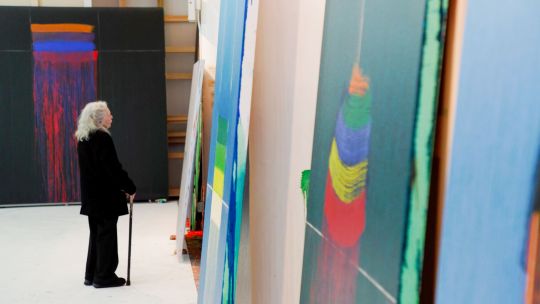
Pat Steir (American b. 1940). These astonishing new paintings are on view right now at Hauser & Wirth in West Hollywood, California. Steir has been painting thin veils of runny, cascading paint since the early 1990s. I'm amazed by the brilliant colors and sense of light in these most recent works. I recently included one of her paintings from twenty years earlier in this drip-themed post.
Friday Circus 2022-23. Oil on canvas, 84 x 54 inches.
Painted Rain #4 2022-23. Oil on canvas, 78 x 52 inches.
Garden 2022-23. Oil on canvas, 84 x 54 inches.
1 note
·
View note
Text


Two paintings by science fiction illustrator John Berkey (American 1932-2008). I don't have information as to the scale, materials, or original use of these pictures, though they were presumably intended for the covers of books. If space and science fiction art appeals to you, I highly recommend the Tumblr blog that originally hosted these images, retroscifiart.tumblr.com, as well as thevaultofretroscifi.tumblr.com.
1 note
·
View note
Text



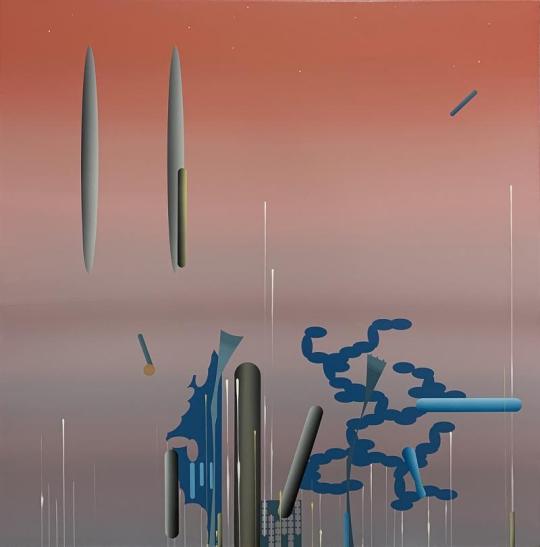



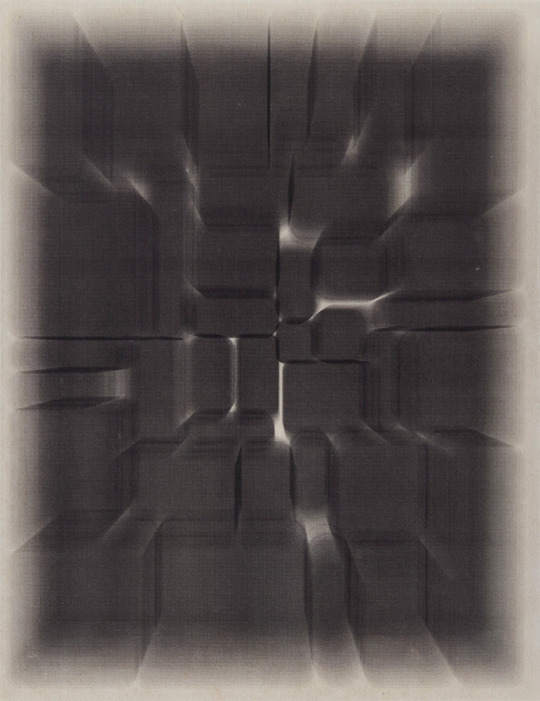
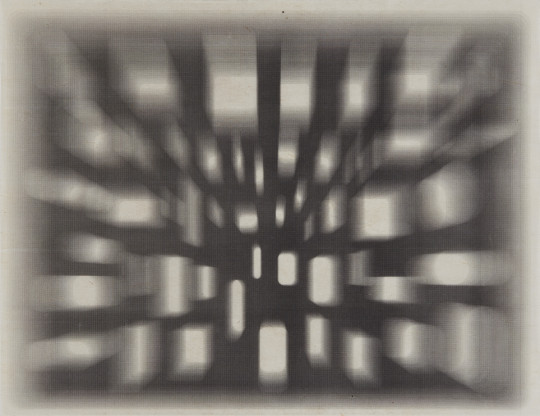
Three artists whose work evokes futuristic imagery. Tam Van Tran's detailed early paintings are reminiscent of glowing, digital schematics, while Adam Ross often references midcentury science fiction illustration. Marsh Cottrell uses a laser printer as an art-making tool, but these are not simply printouts of screen-based art; each of these works on paper is the result of the artist passing a sheet of paper through a laser printer multiple times, each time printing a slightly different image in pale gray until the all of the layers coalesce to describe a dark, mysterious space that wouldn't seem out of place in a film like Stanley Kubrick's 2001: A Space Odyssey.
Tam Van Tran (American, born Vietnam, 1966). Monticello 2000. Acrylic on canvas laid to panel, 30 x 64 inches. Source.
Heavy Metal from Greenland 2001. Acrylic on canvas, 79 x 67 1/2 inches. Source.
Hendryx on Aspirin 2002. Acrylic on canvas, 27 1/4 x 22 1/4 inches. Source.
Adam Ross (American b. 1962). Untitled (Chronopolis 2) 2003. Oil and alkyd on canvas over panel, size unknown. Source.
Until the End of the World #9 2016. Oil and alkyd on canvas, 48 x 36 inches.
Living in a Science Fictional World, #28 2021. Acrylic gouache on canvas over panel, 24 x 30 inches. Source.
Marsha Cottrell (American b. 1964). Aperture Series (40) 2016. Laser toner on paper, unique; 11 5/8 x 18 1/8 inches. Source.
Environments_14 2018. Laser toner on paper, unique; 11 x 8 1/2 inches. Source.
Environments_11 2018. Laser toner on paper, unique; 8 1/2 x 11 inches. Source.
1 note
·
View note
Text
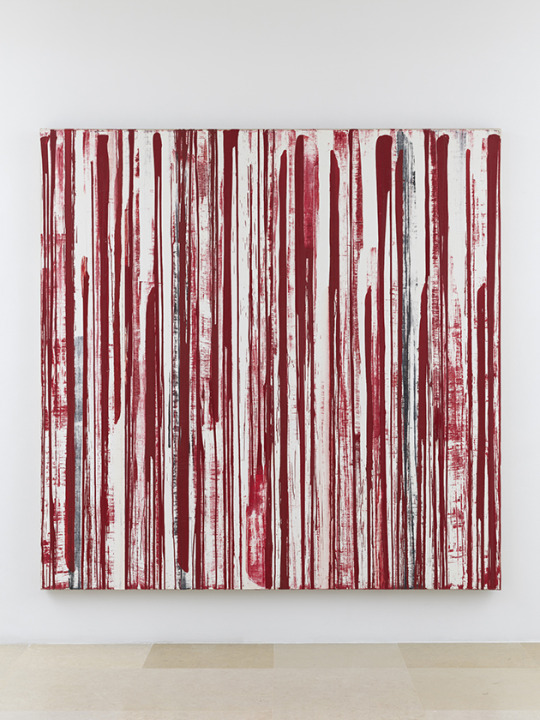



By chance I happened upon pictures of two nearly identical Jacqueline Humphries paintings, listed a few entries apart from one another on the "recent acquisitions" page of the LA MOCA website. It took me a moment to realize that one of the paintings was a mirror-image reproduction of the other. This reminded me of Robert Rauschenberg's similarly odd decision to make two copies of the same "combine," a type of painting/collage/sculpture hybrid he created in the 1950s. I'm not sure how Humphries executed her duplicate, which is made of a different type of paint than the original and is the tiniest bit off-scale (assuming Untitled #5 is the original and Untitled #5A is the duplicate).
Jacqueline Humphries (American b. 1960). Untitled #5 1995. Oil on linen, 90 x 90 inches. Museum of Contemporary Art, Los Angeles.
#5A 1995. Acrylic lacquer on canvas, 89 1/2 x 88 inches. Museum of Contemporary Art, Los Angeles.
Robert Rauschenberg (American b. 1925). Factum I 1957. Oil, ink, graphite, crayon, paper, fabric, newsprint, printed reproductions, and printed paper on canvas; 61 1/4 x 35 7/8 inches. Museum of Contemporary Art, Los Angeles. Source.
Factum II 1957. Oil, ink, graphite, crayon, paper, fabric, newsprint, printed reproductions, and printed paper on canvas; 61 3/8 x 35 3/4 inches. Museum of Modern art, New York. Source.
0 notes
Text






Raoul De Keyser (Belgian 1930-2012). Front 1992. Oil on canvas, 64 7/8 x 48 3/8 inches. Source.
Bern-Berlin hangend 1993. Oil on canvas, 33 3/8 x 47 1/4 inches. Source.
Avondversie 2003. Oil on canvas, 25 9/16 x 19 15/16 inches. Source.
Mary Heilmann (American b. 1940). Ming 1986. Acrylic and watercolor on canvas, 60 x 42 inches. Source.
The Passenger 1983. Oil on canvas, 98 x 78 inches. Source.
Neo Noir 1998. Oil and acrylic on canvas, 75 x 60 1/4 inches. Source.
Both of these painters produce spare, thinly-painted works that sometimes challenge our notion of what a finished painting looks like. The critic Raphael Rubenstein attempted to address this type of painting in a widely-read 2009 article titled "Provisional Painting."
0 notes
Text





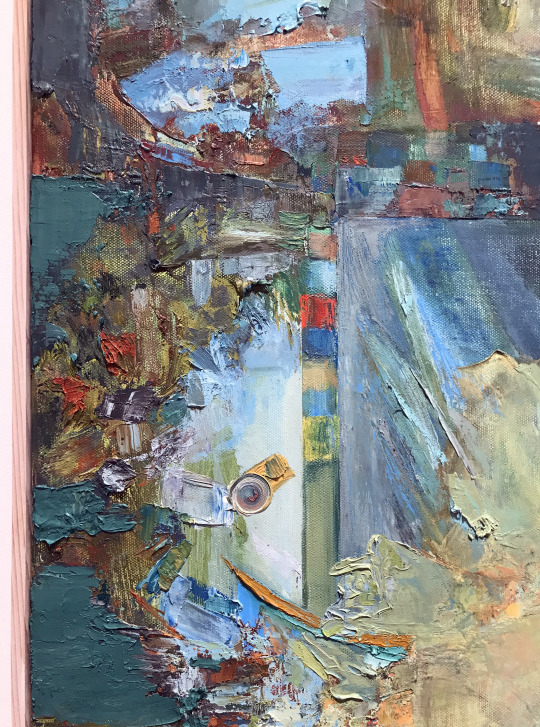

Last week I visited Drie Chapek's current exhibition at Greg Kucera Gallery. Though I was familiar with all of the paintings from images posted on the gallery website, I was, unsurprisingly, delighted to see the work up close, as reproductions of large-scale paintings cannot be expected to convey details such as the quality of the artist's individual marks. Chapek's gorgeous marks never seem forced, decorative, or showy; they have an organic quality, as if they spontaneously emerged from the surface of the canvas. This seems especially appropriate for an exhibition where the distinction between interior environments and the natural world appear to dissolve.
Drie Chapek (American b. 1979). Midday Living 2023. Oil and acrylic on canvas, 60 x 78 inches. Source.
Followed by six closeup images (not taken from Midday Living, however). You can see the entire exhibition here.
1 note
·
View note